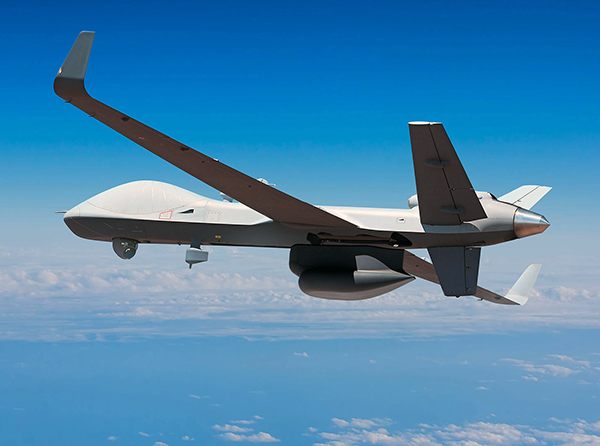The Ministry of Defence and the US Department of Defence inked a Project Agreement under which the Aeronautical Development Establishment (ADE) of the Defence Research and Development Organisation (DRDO), will co-develop with the United States Air Force Research Laboratory (AFRL), an Air-Launched Unmanned Aerial Vehicle (ALUAV).
The drone could be launched from a military cargo aircraft, like C130J or the C17. The Joint Working Group on Air Systems of the India-US DTTI (Defence Technology and Trade Initiative), will oversee the project. It is the inaugural co-development project under the U.S.- India DTTI, aimed at bringing sustained leadership focus to promote collaborative technology exchange and create opportunities for co-production and co-development of future technologies for Indian and US military forces.
The agreement was signed by Brig. Gen. Brian Bruckbauer and Air Vice Marshal Narmdeshwar Tiwari, both co-chair of the US-India Defense Technology and Trade Initiative on 16 July 2021. The agreement outlines collaboration for design, development, demonstration, testing and evaluation of systems to co-develop an ALUAV Prototype.
The project is valued at more than $22 million with costs shared equally, and marks the largest-ever defence Research, Development, Test and Evaluation collaboration between the United States and India. The objectives are the Design, Development, Demonstration, Test and Evaluation of technologies including physical hardware such as small UAVs, avionics, payload power, propulsion, and launch systems through prototyping that meet the operational requirements of the Indian and U.S. Air Forces.
Under DTTI, Joint Working Groups on land, naval, air, and aircraft carrier technologies have been established to focus on mutually agreed projects in respective domains.
The two countries have also inked key defence and security pacts over the past few years, including the Logistics Exchange Memorandum of Agreement (LEMOA) in 2016 that allows their militaries to use each other’s bases for repair and replenishment of supplies as well as provides for deeper cooperation.
The two sides have also signed COMCASA (Communications Compatibility and Security Agreement) in 2018 that provides for interoperability between the two militaries and the sale of high-end technology from the US to India.
In October last year, India and the US sealed the BECA (Basic Exchange and Cooperation Agreement) agreement to further boost bilateral defence ties.
Clarity Sought on Predator Drones
India has sought “more clarity” from the United States about the price fixation, maintenance and transfer of technology in the proposed $3 billion (around Rs 22,000 crore) deal to acquire armed MQ-9B Predator drones before finalising the deal. India plans to buy 30 armed drones, which are designed for long-range precision strikes against hostile targets on land and sea, from the US.
The Indian government finalised the plan to acquire these 30 drones, also known as SeaGuardian or SkyGuardian remotely-piloted aircraft systems (RPAS) to strengthen its long-range unmanned lethal capabilities. The army, navy and Indian Air Force (IAF) are to get 10 drones each, with different payloads to hunt and destroy targets over land and sea, the report saidt.
Once the project gets the AoN from the DAC, India will issue an actionable LoR (letter of request) to the US government. The final contract would be signed after the US responds with a letter of offer and acceptance and notifies US Congress.


















